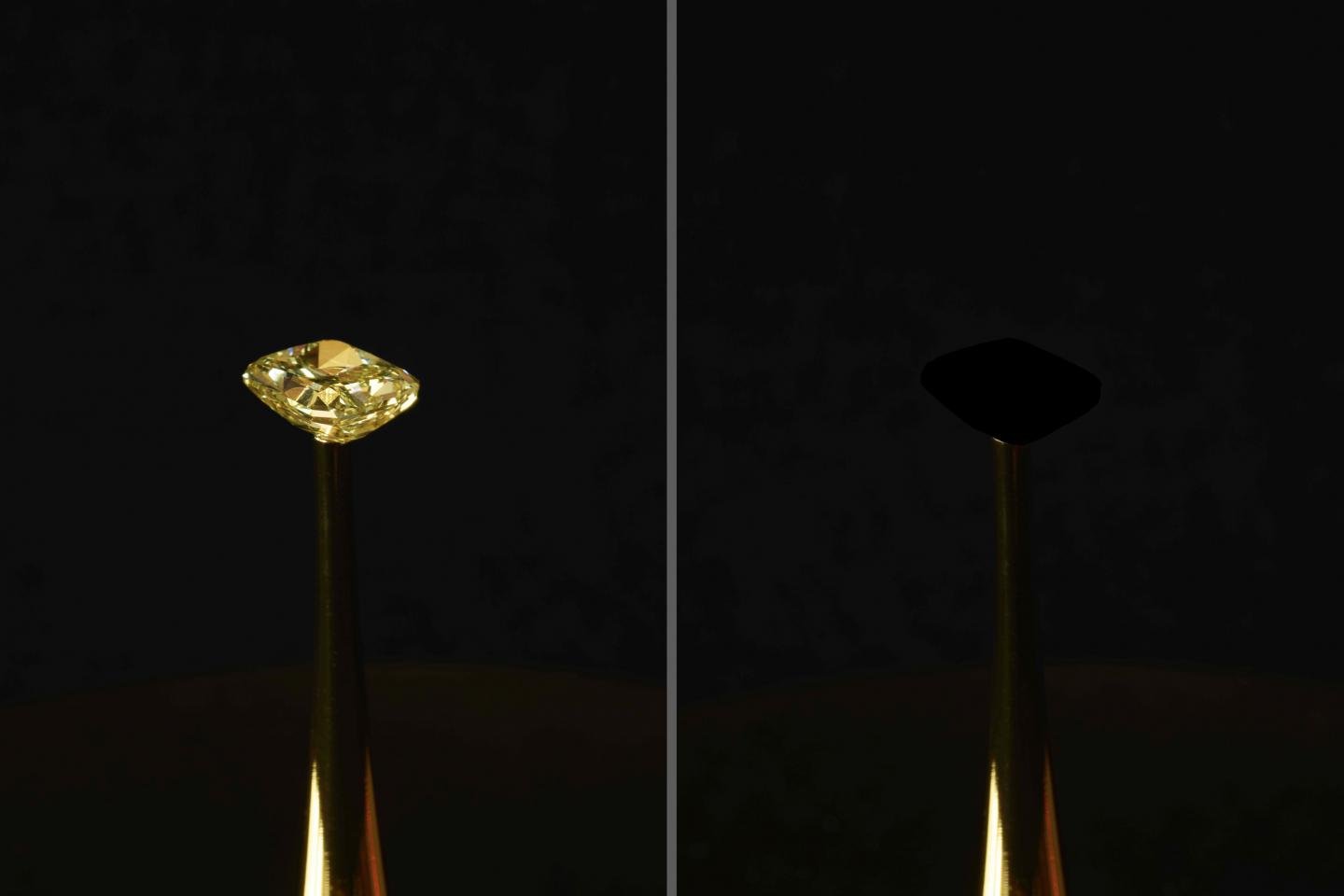
Ultrablack Coating Is 10× Darker Than Other Very Black Materials
MIT engineers have developed a material they say is 10× blacker than any ultrablack material that has previously been reported. The material is made from vertically aligned carbon nanotubes (CNTs) that the team grew on a surface of sodium chloride-etched aluminum foil. The foil captures at least 99.995% of any incoming light.
The discovery of the ultrablack material came about by accident, in the course of work to grow CNTs on aluminum.
When the aluminum was exposed to air, it became coated with a layer of oxide that insulated it, blocking it from being able to conduct electricity and heat. The researchers sought ways to remove the oxide layer and discovered a solution with salt. They soaked the aluminum foil in saltwater, dissolving the oxide layer. They transferred the foil to an oxygen-free environment and then placed the etched aluminum in an oven and used chemical vapor deposition techniques to grow the CNTs. In addition to enhancing the material’s thermal and electrical properties, this approach deepened the material’s blackness.

The Redemption of Vanity is a work of art by MIT artist-in-residence Diemut Strebe. A 16.78-carat naturaI yellow diamond (value $2 million) is covered with light-absorptive carbon nanotubes, which make the diamond appear to disappear. Courtesy of Diemut Strebe.
Researcher Kehang Cui measured the optical reflectance of the sample. The results showed that the material absorbed greater than 99.995% of incoming light from every angle. The CNT architecture demonstrated omnidirectional blackbody photoabsorption with a reflectance of 1 × 10−5 over the range from the ultraviolet to terahertz regions. The CNT architecture could offer high broadband optical absorption with excellent electrical and structural properties as well as industrial-scale producibility, the researchers said.
The material is on display in an exhibit at the New York Stock Exchange. The Redemption of Vanity is an artwork that features a 16.78-carat diamond coated with the new, ultrablack CNT material. Under the coating, the brilliant facets of the diamond disappear into a flat, black void.
In addition to art installations, many optical and space applications have use for ultrablack materials. The researchers are not sure of the mechanism contributing to the material’s opacity, but they suspect that it may have something to do with the combination of etched aluminum, which is somewhat blackened, with the carbon nanotubes. Scientists believe that forests of carbon nanotubes can trap and convert most incoming light to heat, reflecting very little of it back out as light, thereby giving carbon nanotubes a particularly deep shade of black.
“CNT forests of different varieties are known to be extremely black, but there is a lack of mechanistic understanding as to why this material is the blackest. That needs further study,” professor Brian Wardle said.
The researchers have applied for a patent on the technology and are making the new coating process freely available to any artist to use for a noncommercial art project.
The research was published in ACS Applied Materials & Interfaces (https://doi.org/10.1021/acsami.9b08290).
You may also be interested in Stray Light Absorption in Broadband Wavelengths, a February 2018 Photonics Media webinar on ultrablack coatings technology.
Published: September 2019